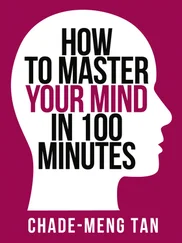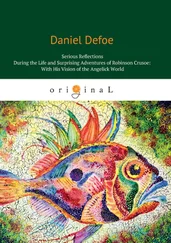Tan, Chade-Meng - Search Inside Yourself - The Unexpected Path to Achieving Success, Happiness (and World Peace)
Здесь есть возможность читать онлайн «Tan, Chade-Meng - Search Inside Yourself - The Unexpected Path to Achieving Success, Happiness (and World Peace)» — ознакомительный отрывок электронной книги совершенно бесплатно, а после прочтения отрывка купить полную версию. В некоторых случаях можно слушать аудио, скачать через торрент в формате fb2 и присутствует краткое содержание. Год выпуска: 2012, Издательство: Harper Collins, Inc., Жанр: Старинная литература, на английском языке. Описание произведения, (предисловие) а так же отзывы посетителей доступны на портале библиотеки ЛибКат.
- Название:Search Inside Yourself: The Unexpected Path to Achieving Success, Happiness (and World Peace)
- Автор:
- Издательство:Harper Collins, Inc.
- Жанр:
- Год:2012
- ISBN:нет данных
- Рейтинг книги:4 / 5. Голосов: 1
-
Избранное:Добавить в избранное
- Отзывы:
-
Ваша оценка:
- 80
- 1
- 2
- 3
- 4
- 5
Search Inside Yourself: The Unexpected Path to Achieving Success, Happiness (and World Peace): краткое содержание, описание и аннотация
Предлагаем к чтению аннотацию, описание, краткое содержание или предисловие (зависит от того, что написал сам автор книги «Search Inside Yourself: The Unexpected Path to Achieving Success, Happiness (and World Peace)»). Если вы не нашли необходимую информацию о книге — напишите в комментариях, мы постараемся отыскать её.
Search Inside Yourself: The Unexpected Path to Achieving Success, Happiness (and World Peace) — читать онлайн ознакомительный отрывок
Ниже представлен текст книги, разбитый по страницам. Система сохранения места последней прочитанной страницы, позволяет с удобством читать онлайн бесплатно книгу «Search Inside Yourself: The Unexpected Path to Achieving Success, Happiness (and World Peace)», без необходимости каждый раз заново искать на чём Вы остановились. Поставьте закладку, и сможете в любой момент перейти на страницу, на которой закончили чтение.
Интервал:
Закладка:
This practice turns out to be very hard for novice meditators because it requires you to breathe in and receive pain and suffering. You do not have to do this, but if you are brave enough, please feel free to try it out. Here are instructions you can use:
TONGLEN MEDITATION
Pre-Meditation Script
In order to master social skills, we have to clear out the emotional gunk—anger, fear, confusion, and even physical suffering, and our resistance to it all. Tonglen is a practice designed for this effect, centered on awareness of breathing.
Tonglen literally means “giving and receiving,” willingness to receive the suffering and pain of others, and giving relief, well-being, and peace in return—thereby experiencing our ability to be transformers.
By breathing in negativity, we can use the heart as a filter. Breathing out, the dark clouds can pass through us, and transform into acceptance, ease, joy, and light/radiance. When we experience this, we strengthen the resolve that nothing can totally overcome us, which establishes deep confidence. This gives us a strong foothold to stand up for the well-being of ourselves and others, thereby building the foundation for compassion. Settling In
Let’s begin by becoming aware of our bodies and our breathing, noting sensations all through the body and gently focusing attention on the ebb and flow of the breath.
(Pause)
Now take a deep breath and imagine on the out breath that you feel you are a mountain.
Take another deep breath and imagine you are viewing life with an elevated perspective. Tonglen
And with another breath, let’s start Tonglen practice, by beginning with ourselves.
With the generosity of an open heart and mind, imagine you can see yourself sitting in front of you. Look at your “ordinary self,” with its suffering—whatever might be troubling you lately.
Breathe this in as if it is a dark cloud of gunk, and let it disperse and transform.
Breathe it out as rays of light. Repeat this breathing cycle for a short time.
(Pause)
Notice if you feel more tenderness, understanding, and warmth for yourself.
(Pause)
Now let’s practice for others:
Imagine you see in front of you someone in your life who is suffering.
With an in breath, feel how open you can be to his or her experience. Perhaps you can feel a strong intention arising to relieve this person of his or her difficulties.
Breathe this in as a dark cloud and feel it entering your heart, where it dissolves any traces of self-interest to reveal your innate goodness.
Breathe out rays of light, setting your intention to alleviate suffering.
Let’s spend some time breathing in and out like this.
(Pause) Closing
For the last few moments, you can bring your hand to your chest and just breathe.
Tonglen is a very powerful practice. The Dalai Lama is said to do this every day as one of his main practices. The first time I did this practice (under the guidance of Zen master Norman Fischer; the script above came from him), I experienced profound change. In those few minutes, I experienced a permanent strengthening of my self-confidence. I realized during the practice that a lot of what was holding me back originated from my fear of pain and suffering, and once I found myself capable of breathing in the pain and suffering of myself and others, and comfortable radiating kindness, love, and compassion, a lot of the fetters holding me back dissolved away.

“There’ve been complaints about who you’ve gotten to help breathe in your pain and suffering…”
We taught Tonglen during the early iterations of Search Inside Yourself, but we soon discovered it to be too hard for many participants. The near-consensus among Search Inside Yourself instructors was to take it out of the curriculum, but I strongly dissented. Tonglen is such a powerful and useful practice, I insisted that we needed to keep it. We eventually came up with a great solution that addressed everybody’s concerns by creating the Multiplying Goodness practice, which is useful and easy for novices to pick up, and it also allows a sneak preview into Tonglen. That is why you will likely not see that Multiplying Goodness practice described as a traditional practice for another hundred years or so, by which time I will be quite old, I think.
My suggestion to you is to start by practicing Multiplying Goodness, and once you feel more confident in your own practice (perhaps after a few weeks), give Tonglen a try. It may change you in profound ways.
Influencing with Goodness
The first rule of influence is that we all already have it. Everything we do or don’t do, and everything we say or don’t say, has an effect on other people. The key is not to acquire influence, but to expand the influence we already have and to use it for the good of all.
Understanding the Social Brain
I find that the most important first step to expanding our influence is to understand the social brain well enough to skillfully navigate it.
According to neuroscientist Evian Gordon, the “minimize danger and maximize reward” principle is an overarching, organizing principle of the brain. The brain is a machine that primarily approaches reward and avoids threat, as illustrated in the diagram below.

Notice that the “Reward (Approach)” arrow is much smaller than the “Threat (Avoid)” arrow. The difference in size illustrates the important insight that our brains respond far more strongly to negative experiences than comparable positive ones. We all experience this every day. For example, if I walk past Jim in the hallway and smile at him and he smiles back, it’s a very minor positive social experience for me and it affects me only very slightly. Most likely, the experience would fade out of my mind in a few moments. However, let’s say Jim does not smile back, he just looks away slightly grim-faced and continues walking. Objectively, it’s roughly comparable in magnitude (in the negative direction) to him smiling back at me, but subjectively, I am likely to react much more strongly. I might go, “ Whoa, what’s up with that? What’s wrong with that guy? What did I do to him this time?” Instead of a few moments, this one might last many minutes, perhaps even longer. Negative experiences impact us more strongly and last much longer than positive ones do.
How many positive experiences does it take to balance out a comparable negative experience? It depends on who you ask. In Chapter 6, we mentioned the groundbreaking work of psychologist Barbara Fredrickson, which suggests the ratio to be 3:1. She discovered that “experiencing positive emotions in a 3-to-1 ratio with negative ones leads people to a tipping point beyond which they naturally become more resilient to adversity and effortlessly achieve what they once could only imagine.” 4Famed psychologist John Gottman, however, found a different ratio in a different context. He found that for a marriage to succeed, there must be at least five times as many positive interactions in the relationship as negative ones, a 5:1 ratio that Gottman dubbed the “magic ratio,” 5more commonly known as the “Gottman ratio.” This ratio is such a powerful predictor that Gottman reputedly can accurately predict if a marriage will end in divorce within ten years just by scoring the positive and negative interactions in a fifteen-minute conversation between the couple. He jokes that this is why he does not get invited to dinner parties anymore.
Читать дальшеИнтервал:
Закладка:
Похожие книги на «Search Inside Yourself: The Unexpected Path to Achieving Success, Happiness (and World Peace)»
Представляем Вашему вниманию похожие книги на «Search Inside Yourself: The Unexpected Path to Achieving Success, Happiness (and World Peace)» списком для выбора. Мы отобрали схожую по названию и смыслу литературу в надежде предоставить читателям больше вариантов отыскать новые, интересные, ещё непрочитанные произведения.
Обсуждение, отзывы о книге «Search Inside Yourself: The Unexpected Path to Achieving Success, Happiness (and World Peace)» и просто собственные мнения читателей. Оставьте ваши комментарии, напишите, что Вы думаете о произведении, его смысле или главных героях. Укажите что конкретно понравилось, а что нет, и почему Вы так считаете.







![Chade-Meng Tan - Search Inside Yourself - Increase Productivity, Creativity and Happiness [ePub edition]](/books/703803/chade-thumb.webp)



